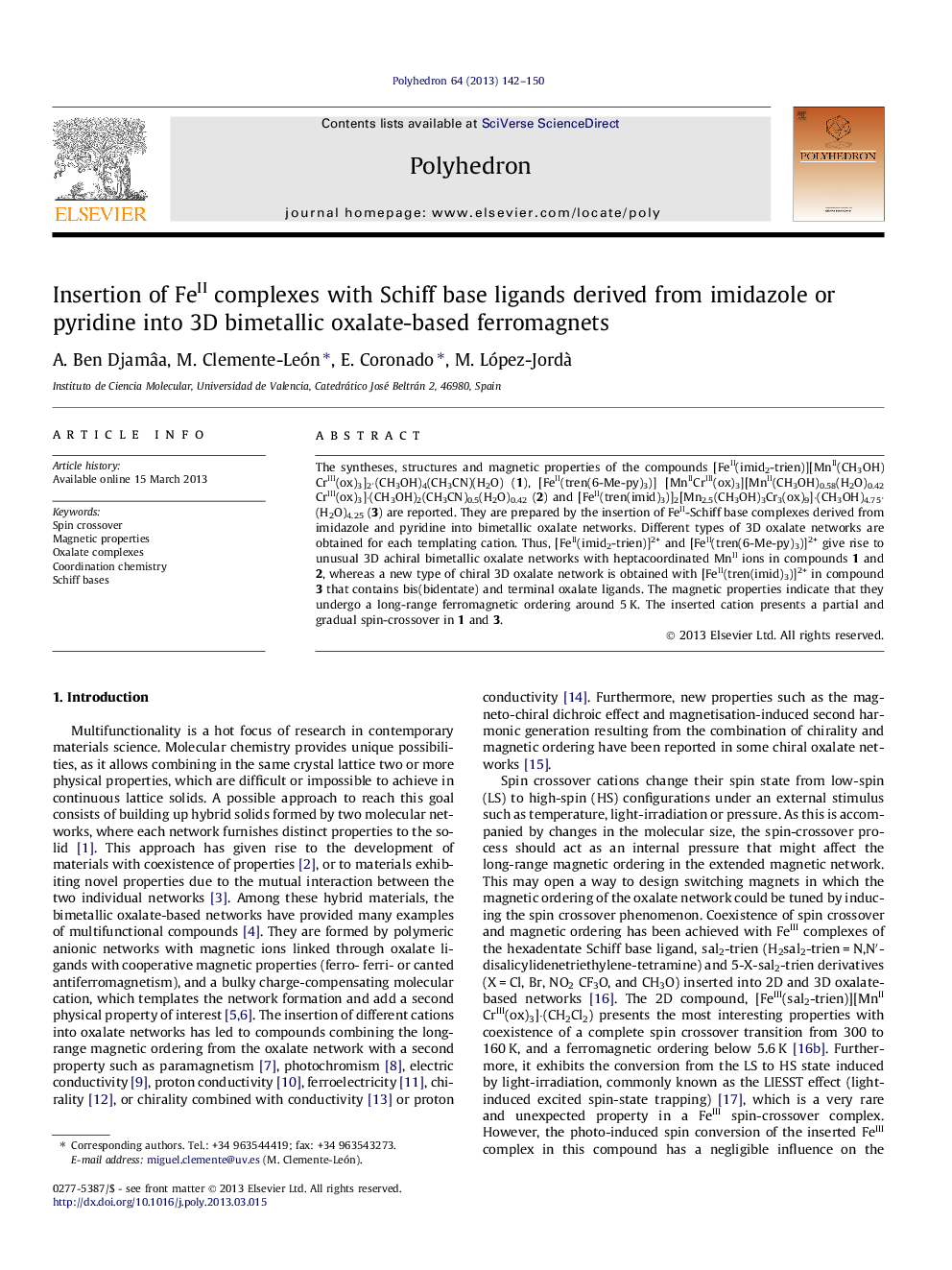| Article ID | Journal | Published Year | Pages | File Type |
|---|---|---|---|---|
| 1337035 | Polyhedron | 2013 | 9 Pages |
The syntheses, structures and magnetic properties of the compounds [FeII(imid2-trien)][MnII(CH3OH)CrIII(ox)3]2·(CH3OH)4(CH3CN)(H2O) (1), [FeII(tren(6-Me-py)3)][MnIICrIII(ox)3][MnII(CH3OH)0.58(H2O)0.42CrIII(ox)3]·(CH3OH)2(CH3CN)0.5(H2O)0.42 (2) and [FeII(tren(imid)3)]2[Mn2.5(CH3OH)3Cr3(ox)9]·(CH3OH)4.75·(H2O)4.25 (3) are reported. They are prepared by the insertion of FeII-Schiff base complexes derived from imidazole and pyridine into bimetallic oxalate networks. Different types of 3D oxalate networks are obtained for each templating cation. Thus, [FeII(imid2-trien)]2+ and [FeII(tren(6-Me-py)3)]2+ give rise to unusual 3D achiral bimetallic oxalate networks with heptacoordinated MnII ions in compounds 1 and 2, whereas a new type of chiral 3D oxalate network is obtained with [FeII(tren(imid)3)]2+ in compound 3 that contains bis(bidentate) and terminal oxalate ligands. The magnetic properties indicate that they undergo a long-range ferromagnetic ordering around 5 K. The inserted cation presents a partial and gradual spin-crossover in 1 and 3.
Graphical abstractThe syntheses, structures and magnetic properties of the three compounds formed by the insertion of FeII base-Schiff complexes are reported. 1 and 2 present an unusual 3D achiral bimetallic oxalate network, whereas 3 present a new type of chiral 3D oxalate network. The inserted complex presents a partial spin-crossover in 1 and 3.Figure optionsDownload full-size imageDownload as PowerPoint slide
